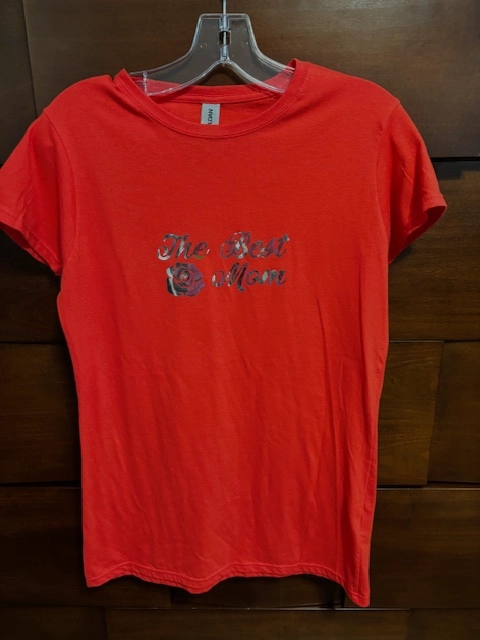The Art of Custom-made Needlework: Opening the Tricks to Creating Distinct and Unforgettable Designs
The tricks to creating custom needlework styles that captivate the eye and leave a long-term perception lie in a delicate equilibrium of method, creativity, and attention to information. As we dive right into the globe of customized needlework, we discover the nuanced interplay in between thread option, stitch complexity, and layout customization that elevates a plain garment to a work of art.
Picking the Right Embroidery Threads
When selecting embroidery threads, what vital variables should you think about to ensure the most effective results for your personalized layouts? The choice of embroidery thread is vital in determining the final outcome of your embroidered layout. One of the main factors to consider is the material of the thread. Various materials such as cotton, polyester, rayon, and silk provide varying degrees of sheen, toughness, and appearance. It is important to pick a string material that complements the textile you are embroidering on and aligns with the desired appearance of the layout.
Thicker strings can include dimension and structure to your style, while finer threads are ideal for complex details and small text. In addition, thinking about the shade fastness and washability of the string is important to make certain that your custom-made styles preserve their high quality and vibrancy over time.
Discovering Various Stitch Strategies
To delve into the realm of 'Checking out Different Stitch Methods', one need to understand the intricacies and subtleties that each stitching method brings to the art of needlework. Various stitch strategies not only include aesthetic rate of interest however additionally contribute to the total appearance and dimension of the design. One prominent stitch technique is the satin stitch, which includes very closely stuffed parallel stitches to develop a smooth and shiny surface area, suitable for filling out shapes and developing strong lays out.
On the various other hand, the backstitch is a versatile method frequently made use of for detailing and adding great details. It involves stitching backwards to produce a strong line of embroidery. Additionally, the French knot stitch adds a responsive component to layouts, ideal for creating textured accents like blossom facilities or decorative touches.
Discovering different stitch methods permits embroiderers to play with light, shadow, and depth within their layouts, raising the aesthetic charm and imaginative high quality of their needlework projects. By understanding various sewing techniques, one can open countless opportunities for creating unique and memorable customized needlework items.
Incorporating Personalized Layout Elements
Having checked out the complexities of different stitch methods such as the satin stitch, backstitch, and French knot, the emphasis currently moves towards incorporating individualized design elements in custom-made needlework jobs. Individualized design elements play a critical role in making embroidery projects really distinct and remarkable. One method to include customization is by adding initials, names, or substantial days to the style. This not only adds a customized touch but also boosts the nostalgic value of the needlework item.
Another way to integrate personalized style elements is by including icons or themes that hold unique meaning to the recipient or mirror their interests and character. As an example, integrating a favored blossom, animal, or hobby-related sign can make the needlework design extra meaningful and customized. Additionally, picking shades that reverberate with the recipient or align with the desired theme can additionally enhance the customization Recommended Site of the needlework job.
Understanding the Art of Color Sychronisation

One trick aspect of color control is understanding color concept. This consists of knowing exactly how various colors communicate with each various other, the feelings they convey, and exactly how they can be incorporated to create visually attractive layouts. By applying color theory concepts, embroiderers can develop unified color palettes that improve the total appearance of the design.
Furthermore, taking notice of comparison is essential in color sychronisation. Making use of contrasting shades can aid certain elements of the style pop, enhance clarity, and develop an aesthetically vibrant needlework piece. By mastering the have a peek here art of color sychronisation, embroiderers can raise their styles and produce unforgettable items that reverberate with customers and customers alike.
Enhancing Appearance With Advanced Needlework Stitches

French knots, for instance, are best for including tiny, elevated dots to your layout, mimicking the appearance of beads or creating a distinctive surface. Bullion knots, on the other hand, can be utilized to develop twisted, ropelike aspects that add a glamorous feel to the embroidery. Seed stitching involves tiny, scattered stitches that can fill out areas with a speckled texture, while turkey job develops cosy, dimensional accents evocative pet fur or foliage. Try out these advanced needlework stitches permits you to press the limits of typical embroidery and create truly unique and aesthetically attractive structures in your designs.
Conclusion
To conclude, the art of personalized embroidery involves a combination of picking the best threads, discovering various stitch strategies, integrating customized layout aspects, mastering shade coordination, and enhancing appearance with sophisticated stitches. By understanding and carrying out these essential components, embroiderers can create special and memorable styles that display their imagination and ability. Embroidery lovers can unlock the tricks to developing beautiful and bespoke items that stick out and leave a lasting impression.